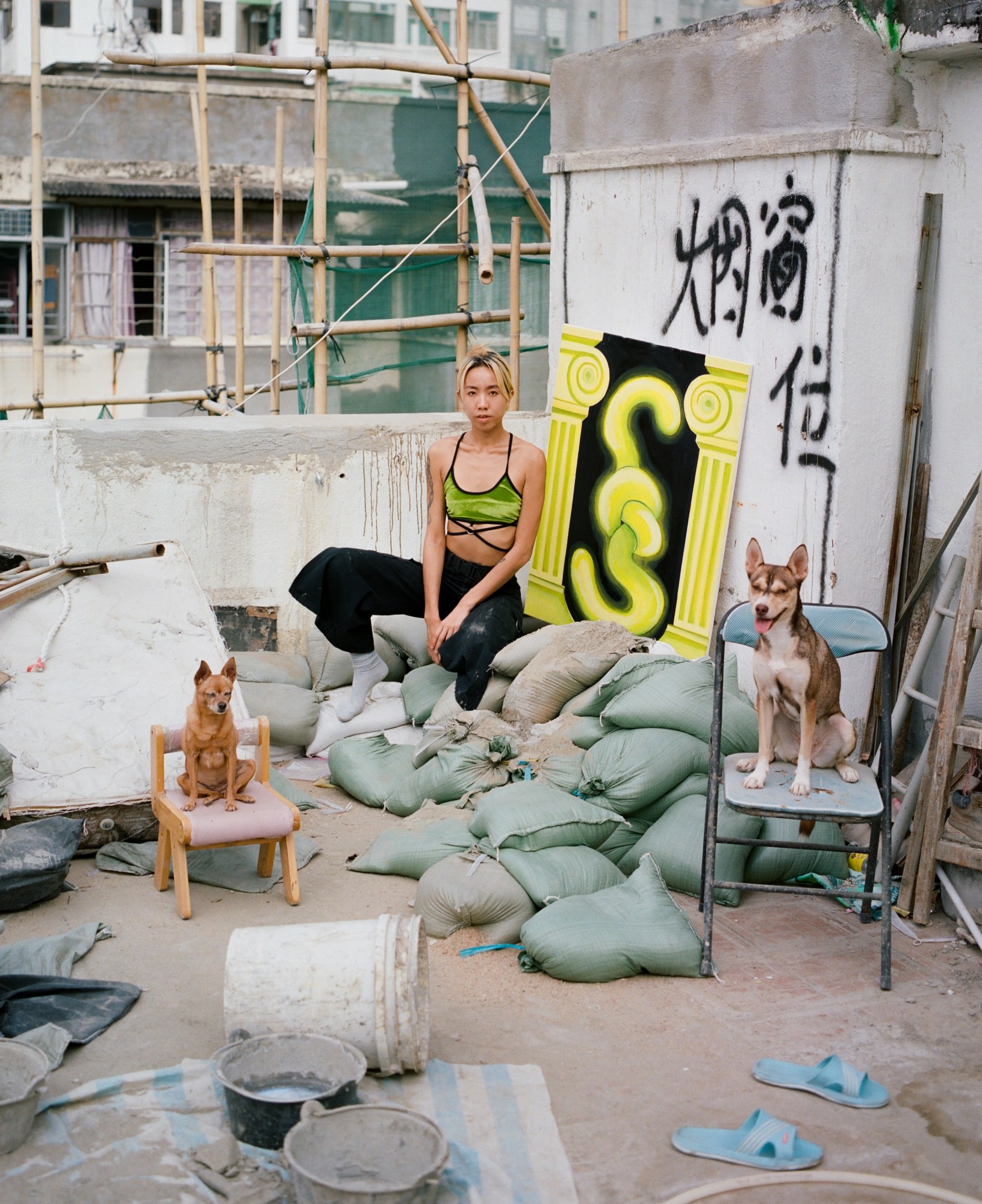Unlike much of the world, Hong Kong — a city of 7.5 million people that borders mainland China — has managed to avoid a total lockdown since the pandemic began. Responding swiftly and decisively in January, when the situation took a turn for the worst, the city prevented the spread of the virus by acting on learnings from the SARS epidemic in 2003. But that’s not to say life in Hong Kong, hasn’t changed dramatically over the past nine months. Especially for artists working in creative industries.
Fragile and bubble-wrapped with preventive measures against travel and public gatherings, the city’s become a safe haven closed off to the rest of the world. It’s resulted in small and big businesses flailing, without substantive support from the government. People are learning to adapt to the new normal, but the gap between rich and poor, the high end and the underground has never been more felt. The burden of sky-high rents, minimal space and a culture rooted in capitalist values has been exacerbated, as artists fend for themselves in a city that’s always been hostile to creatives.
Here i-D speaks to six young artists about the year so far, and how they’re creating, coping and collaborating in the midst of the pandemic.

Charlene Man, illustrator and muralist
Why did you decide to come back to Hong Kong?
In London, I was always the Chinese illustrator. It was “can you do our Chinese New Year campaign?” It’s great, but I always got pitched for these sorts of projects and I wanted to do other fun stuff too. I create illustrations that can be translated both ways — Chinese culture into English and I apply English culture with its dark humour. I’ve had friends that say, “I like that your work is funny, but slightly hateful”.
How have you honed your craft?
The course I took at Camberwell College of Arts is really experimental, it’s very concept-focused. It’s not going to teach you how to get a job, it’s more about how to think of ideas. It really opened up my mind to what illustration could be. Since 2016, after I left the UK, I decided to go completely freelance. I came up with an exhibition idea inspired by my mum, who kept telling me to find a job because I’m being lazy. I started thinking about laziness and how I could make ‘lazy’ my career. I thought that would be really funny. I came up with a concept where I would promote laziness like a cult, kind of religiously. I wrote up this proposal and sent it to galleries and spaces in Taiwan, Hong Kong and Japan. I did a tour of the show, promoting our work as a missionary.

You now paint large scale murals around the world, how did those start
When I first moved to Hong Kong, I was asked by a social worker to paint a mural for this rural village, whose residents didn’t enjoy living there. They wanted me to paint something fun, so they felt like they belonged to the place. It’s along a popular hiking route and people go up and pass the village on the way to this dim sum restaurant. Recently, it’s been in the newspaper that it’s called mural village, but it’s only really my work up there. I enjoy working at a large scale and not at my desk, and now I’ve travelled around Asia doing this kind of thing.
How has the pandemic affected your mental health?
I’ve become really controlling about cleanliness because my brother has two kids and my sister was pregnant with the third one. So, I felt really under pressure — if I want to see my family I have to be really careful.
What have you been doing this year?
I did one project with the Mills [a non-profit cultural institution in Tsuen Wan that operated as a cotton mill in the 60s] and a charity called the Hong Kong Society for the Protection of Children, as well. They wrote a story for social awareness that illustrated people in the community like the si lai, it’s a term for a housewife. It’s something I’m interested in because it doesn’t really exist in the West. It only exists in Asia, someone that looks after the family, but they dress in a particular way. They all have permed hair and wear a strap bag, patterned T-shirts and elastic trousers, trainers and have a trolley. But they’re so knowledgeable about what they do and people always judge them.
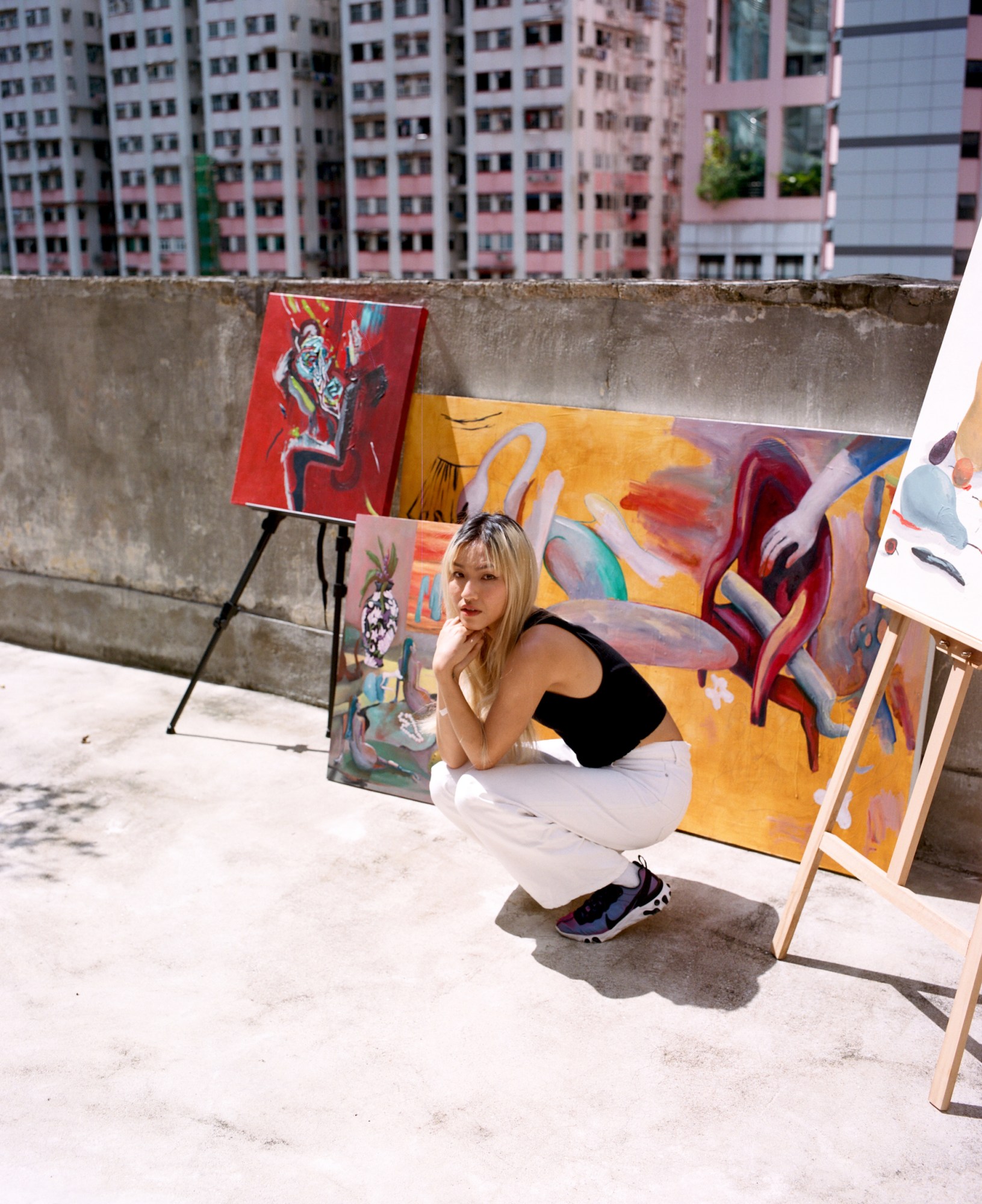
Amy Tong, painter
How has this year been for you?
I joined HART Haus in January, just before the virus started — it’s a social studio, where they bring experienced artists, as well as students or graduates together to see if they can collaborate. I started using the studio for two weeks and then they had to close down because of coronavirus. It reopened in February and since then I’ve been working with another artist to do an installation, which is something I’ve never done before. She’s called Sharu Binnong Sikdar and uses organic material like hair, leaves and twigs to make sculptures, paintings or installations. We’re shredding a bunch of old clothes and then tying it and weaving it into a carpet to create a zen garden.
Have you exhibited in any shows?
I was in a group show about feng shui at The Nate in Jordan, working with this feng shui artist. We gave him our time and date of birth and he gave us information about our life, then five artists created an exhibition from that. The second was an open studio and, most recently, there was a charity auction of a group of paintings for Xoloplastics, where I created a work of art using recycled plastic tiles. Eight artists were featured and all the proceeds were directed to an emergency relief program supporting vulnerable families affected by Covid-19. I was going to do a solo show but that will have to wait until next year.
I feel like I haven’t lived this year. I haven’t done much but I have developed a lot as an artist. I’ve had more time to spend on my work, develop the concepts and my style and experiment with different skills of painting. I didn’t do fine art in school, so I’ve never really experimented with those higher technical skills.
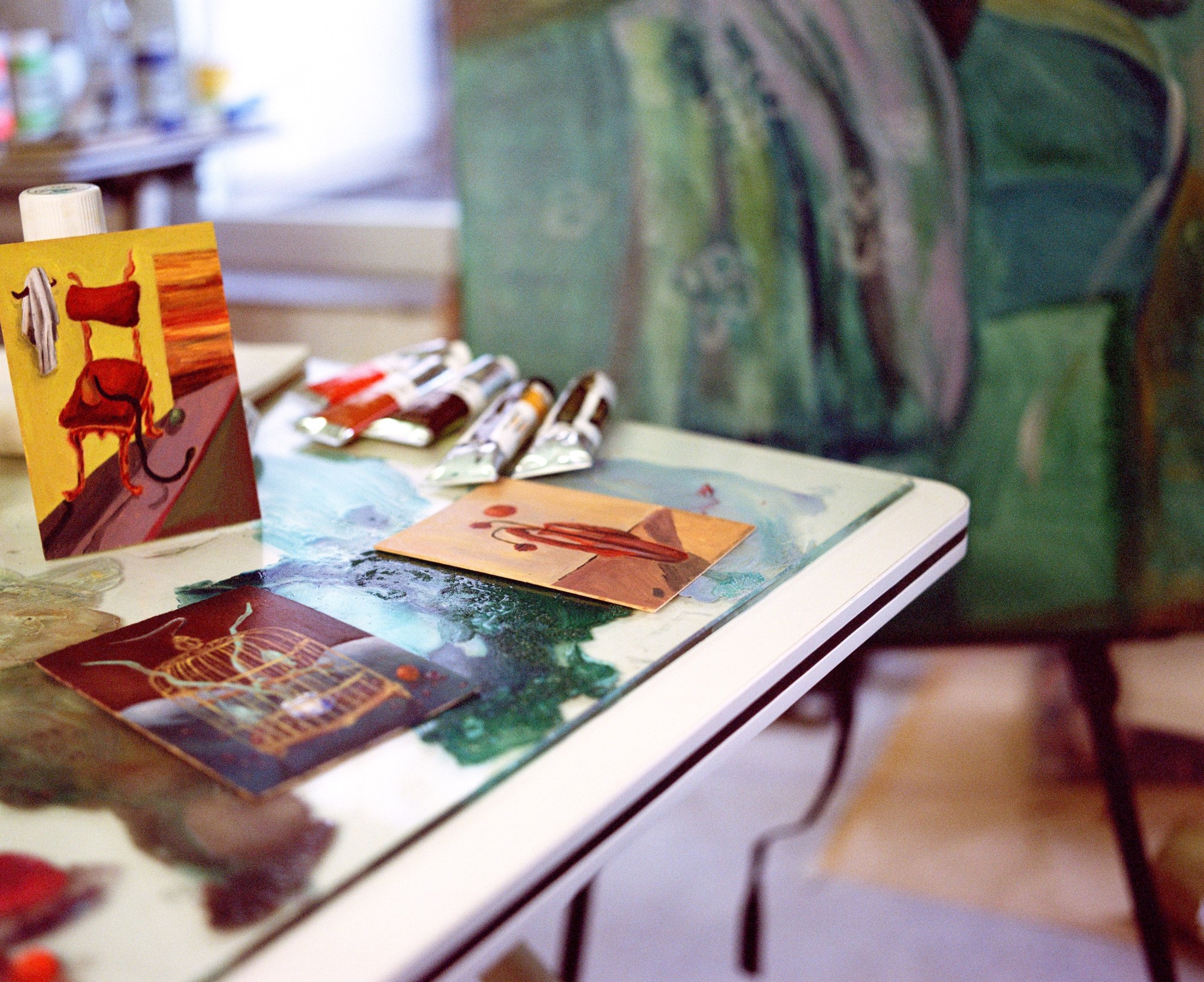
What are the main themes in your work?
I paint emotions, explore ideas of femininity, sexuality and mental health, but also just a lot of things around me — everyday objects and activities. As an artist, we communicate visually and we need other people to help us to tell us what they mean. I feel like everyone sees different things and I like that because at the end of the day, I’m putting it out there for other people too.
How do you deal with the anxiety of losing jobs or opportunities?
It did stress me out, but I’m a hustler. Life hasn’t really changed that much for me because I’ve always had to struggle to find work. That said, a lot of jobs and events that were supposed to happen this year have been cancelled.
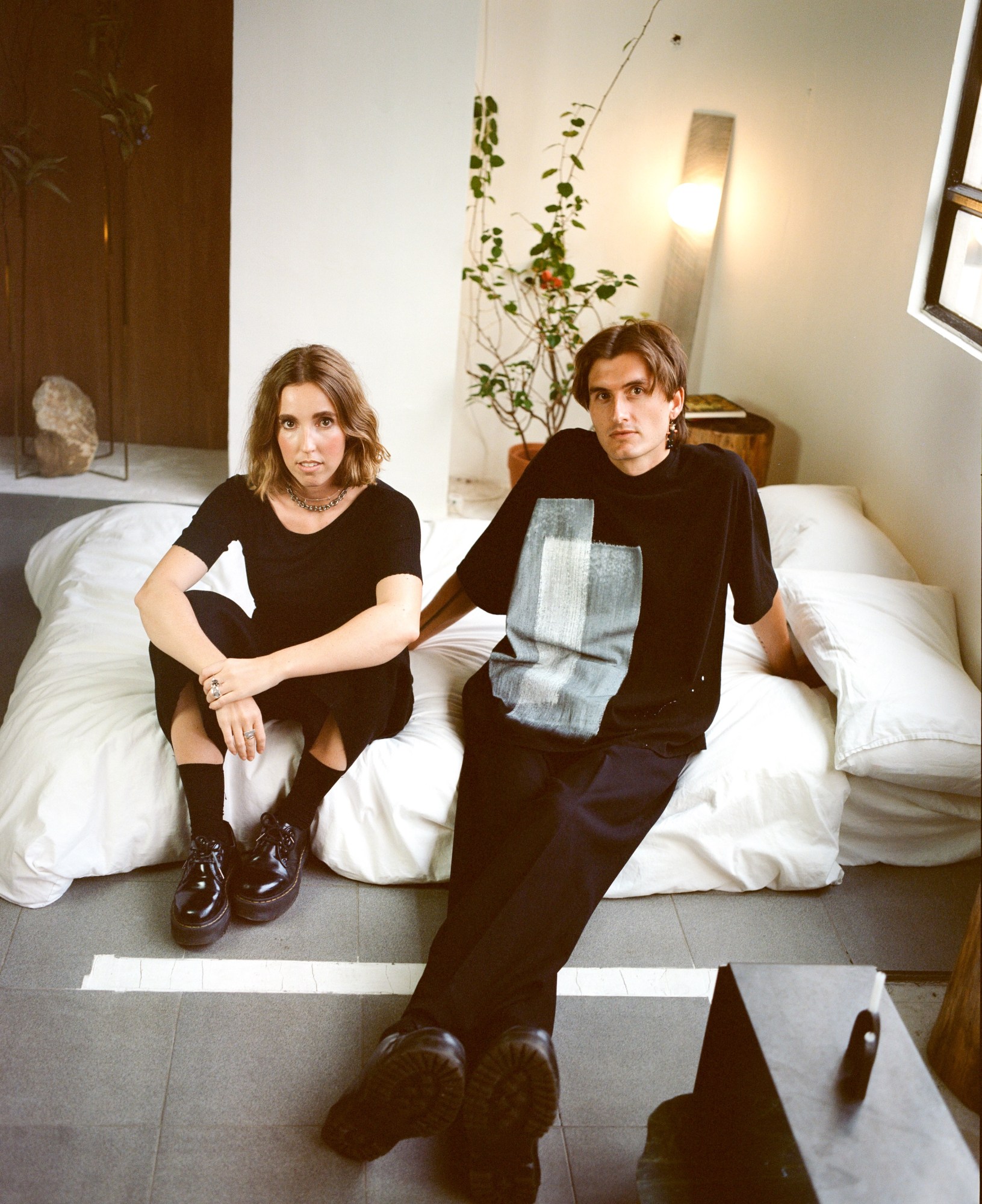
Alexandra Batten and Daniel Kamp, interior designers and artists
Who are Batten and Kamp?
Alexandra: We’ve been together for 11 years and we just know that we absolutely spark creatively. It’s a very wide umbrella under which we sit — we really love forms and art.
Daniel: Our practice is not defined by a particular output. We’re aware that in three years time it might look quite different than what it is now, but what will be consistent is this creative relationship.
What inspires you?
Alexandra: We have always been obsessed with beauty, natural qualities and ideas. We’re quite explorative in that way. Dan, in particular, is a real magpie.
Daniel: At one point, I was literally going out and hauling these stones off Mount Davies and bringing them back. But I suffered from a bad injury doing that ridiculous manual work all the time.
Alexandra: As soon as he got injured, I was like, well, I guess we’re out of stock.
What’s it been like launching a company in the midst of a pandemic
Alexandra: We always planned for it to be the start of 2020, but when Covid happened we knew that the only way to allow it to exist was to give it absolute freedom and flexibility. Our sole goal for this year was to make a company that can survive.
Daniel: We’re incredibly lucky to start now because most people who already had a practice, it looked a certain way and then the whole world changed. It’s really hard to adapt something once it already exists.
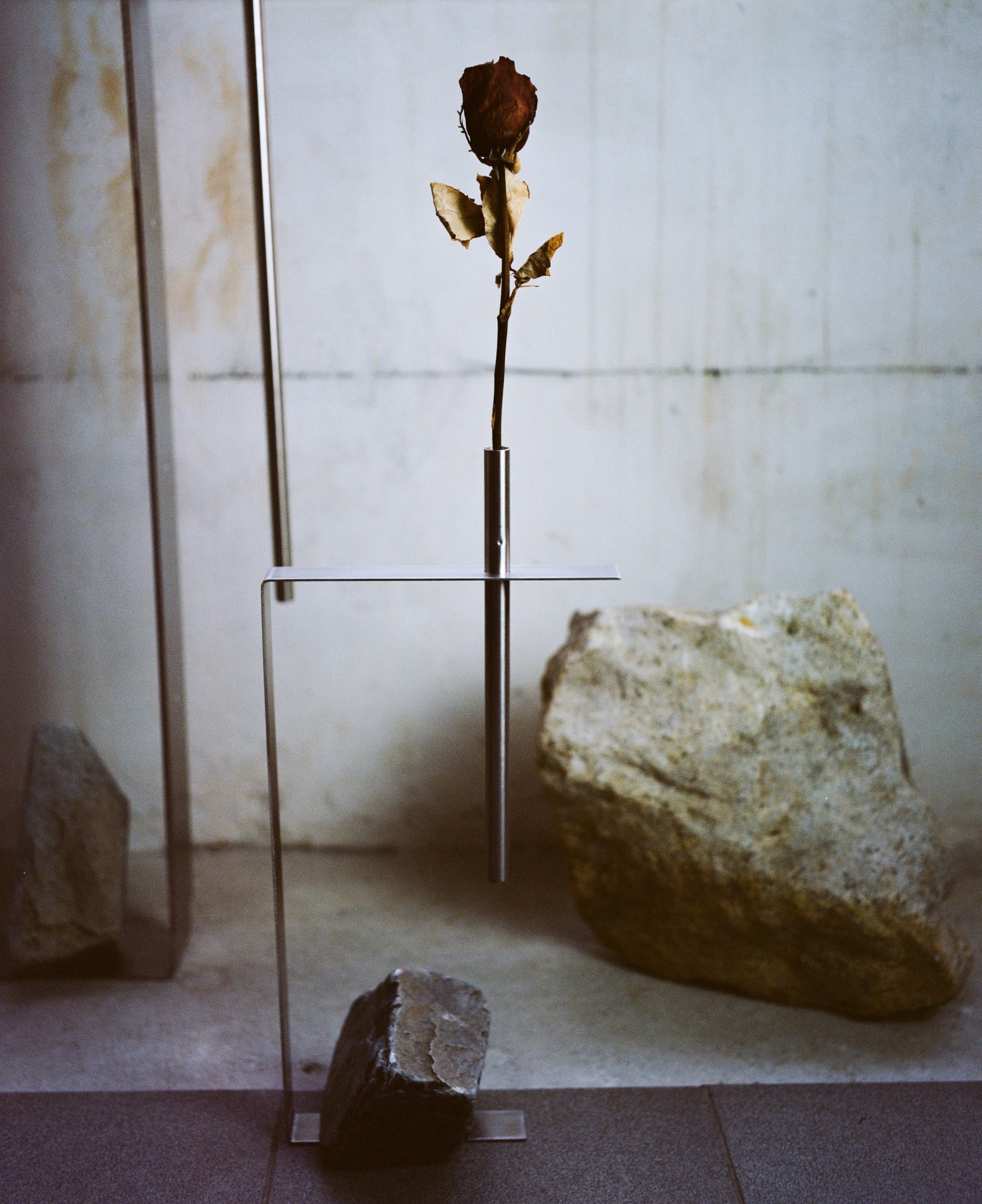
Has the pandemic given you the time and space to think about what you wanted your practice to look like?
Daniel: It did the opposite. We knew we had to hustle just to eat next week. We were doing everything. At one point we were making table dividers for restaurants to prevent Covid. It was kind of a joke, but we did it for our friend’s restaurant and then we literally survived off making table dividers for two months.
What’s felt like a success?
Alexandra: So much has felt like a success because our measure of success was surviving. Our bar was so low. But we were one of five designers from around the world at Design Art Tokyo awarded the Under 30 Award. That was massive for us.
What’s been the biggest stress this year?
Daniel: Money. Not that there hasn’t been any, but it’s just been more front of mind than ever. I think for millennials around the world, this has been a wakeup call that things can get very difficult, very quickly.
Overall, how do you feel about 2020?
Alexandra: You almost feel like you need to put a disclaimer on your own happiness or success in times like this because there’s so much hardship happening. But we shouldn’t because the more people can say what they’ve experienced positively from all of this, the more we can help one another.
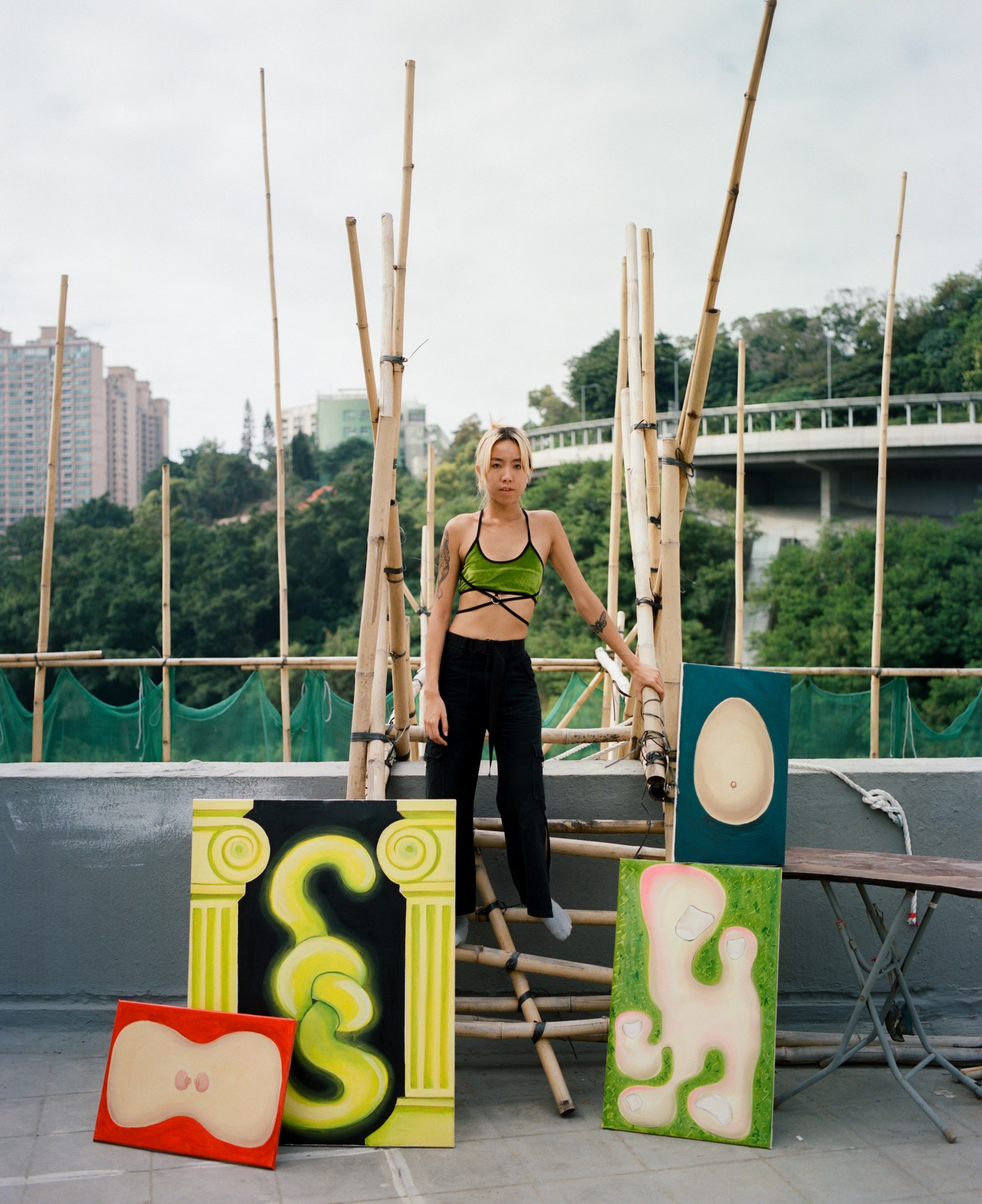
Mildred Cheng, painter, event curator and graphic designer
What has changed for you this year?
For me, this year has been really special. I’ve started looking for a new path in my creative career, one that is more connected. I have been doing a lot of graphic design, but in Hong Kong that’s all about money. It’s commercial and even during the pandemic, it’s just telling people to consume. After I read “Design for the Real World” by Victor Papanek I decided to create with a focus on what humans need rather than want, looking at the possibilities of social design.
Do you have anything in the pipeline?
I have applied for government funding for an art installation sound temple. I want to create a healing space for audiences to escape the roar of the city, by using certain colours, movements and sounds to create a calming and therapeutic environment. In Hong Kong, young people are still living with their parents in their twenties — the scarcity of space is a big problem and it affects young people the most. I wanted to create a space for people to gather, meditate and share their emotions and thoughts. My plan is for four rooms that walk you through a journey from birth to death. The first room symbolises the start of the day, it would be really intense, orange light, inspired by James Turo’s light therapy. The next is a watery room, filled with an intense blue light. Then soft white to represent the mother’s womb, filled with beanbags and cushions for people to relax.
How has painting helped you deal with the pandemic?
In my paintings, I’m trying to express my emotional state during the pandemic. It’s kind of a tangle, but also depicts me trying to find a balance within myself. Painting is my meditation.

Has the pandemic changed your mentality towards life?
I want to find my own style and learn to express what I truly feel instead of following what’s on trend right now. I’ve also learnt to enjoy the peacefulness of isolating here in Hung Hom. It’s the funeral district of Hong Kong and there’s beautiful craftsmanship everywhere, from the florists to the paper shops. I’m finding more inspiration not from the outside world, but from within.
In normal times, is it hard to be a creative in Hong Kong?
It’s really hard but I’m happy that the scene is kind of underground, so there’s a lot of uniqueness and creativity that blossoms there. There’s a really big gap between the high and low in Hong Kong, we have a lot of fine art galleries, but there’s also a lot of indie ones like Parallel Space in Sham Shui Po.

Herman Rahman, imagemaker and archivist
What does your practice focus on?
My practice revolves around photography and looking at images. It’s deeply rooted in archives, research and bringing up lost or forgotten histories. I think photography is an important tool in how the world functions today. And it always has been because the project of colonisation, for example, was a project of ethnography, which has to be supported by photography. I think Walter Benjamin said that we have to understand images because images are the language of the future.
You’re also an archivist at City University, how does that impact your work?
I’m working on a project funded by the Moonchu Foundation run by Johnson Chang. I’m helping to archive images of people, objects, archaeological studies, communist meetings and Soviet-era events in Hong Kong and greater China. But I’m particularly interested in poses in portraiture. Photography was a rich person’s thing back then, so all these colonial masters would take pictures with their servants. There’s this dynamic within the image because it seems like there’s a tension there. It’s about power. Most of the time the servants don’t look at the camera — the only people that look at the camera is the white man. The locals will be looking away in the distance. How do you reclaim that tension? If you ask me, looking away in the distance is a more powerful, superhero thing compared to a straight eye look in the camera. I take the images out of context and re-appropriate them into something completely new.
Do you take your own photographs?
I studied photography for three years, but do you fall in love with something more with time or do you hate it even more because you understand something in a much deeper way? When I grew up in Singapore I was super patriotic, but the older I got the more I understood it and thought there was something wrong. I was a firefighter for two years while I completed my national service, so it obviously shaped how I look at life in general, but more specifically death as well. You’re confronted with accidents and some days, you have nothing to do at work because the city is safe. There’s this proximity thing with photography too. I think I’m still trying to fall back in love with it.

When was your last show?
My last big show was an art fair in May 2019 at the Somerset House. I’d just been signed by a gallery in late 2018, so that was my first engagement and we sold all the works. I was just a fresh graduate at the time. But I stopped making art after that because my partner passed away at the end of 2018.
How do you feel about Hong Kong right now?
Hong Kong makes me sad sometimes because I can’t imagine 2 million people or more who last year were screaming their lungs out and this year are just being quiet.
What has this year given you as an artist?
It has afforded me moments of solitude, which I really treasure. We’ve been spinning through life, zooming through life not being able to slow down or whatever, but this whole pandemic has given me time to reflect. As C.G. Jung says, normally “people will do anything, no matter how absurd, to avoid facing their own souls”.
